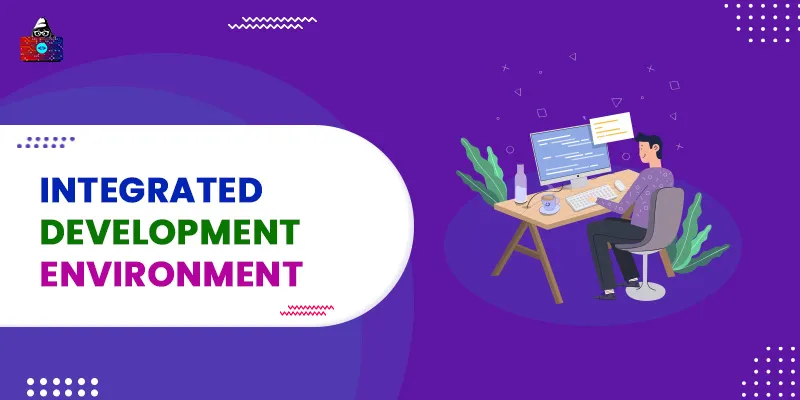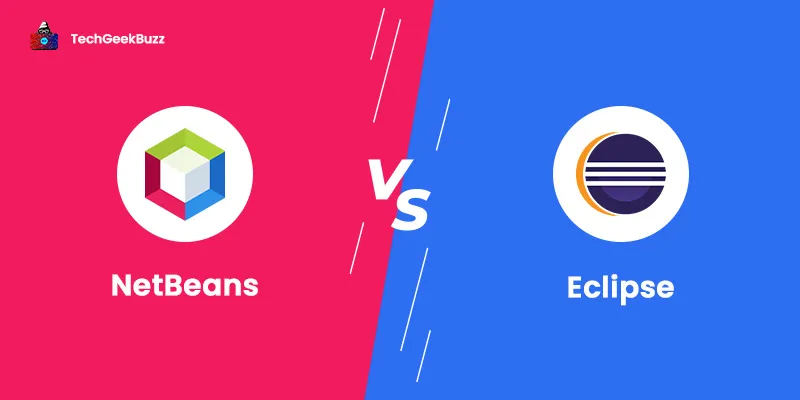Programmers and coders need software on which they can write code for a particular (or many) programming languages. This software is an IDE (or an integrated development environment) and a code editor. Due to the immense rise of programming, there are a galore of options for writing code.
We all know we cannot write code using MS Office or WordPad. To write code, we require a dedicated interface. Though using Notepad and changing the file extension, we can write code, but that is not a good idea in most cases.
So, there are two types of software we can use to write code editors and IDEs. Code editors or text editors are simple and lightweight software with the main objective of providing an interface for writing code. An integrated development environment is a suite of tools that provide more functionalities than a mere code editor.
Let's know about that in detail below.
What is IDE?
An integrated development environment is desktop software used by computer programmers for software development. In addition to writing code, an IDE allows debugging, compiling, testing, and so on. It is software that is used to assist the programmer in increasing productivity. It provides a set of functionalities that assist the programmer and make coding and debugging easy and efficient.
At present, there are many IDEs available, such as Microsoft Visual Studio, NetBeans, Eclipse, and PyCharm. Some IDEs are dedicated in nature, which means they are specially designed for a particular programming language.
For instance, Turbo C++ is designed for C++, Eclipse is designed for Java, and PyCharm is designed for Python. Nonetheless, there are many IDEs that can be used to write and compile (or interpret) any programming language code. Here are some of the most popular IDEs:
- Microsoft Visual Studio
- NetBeans
- PyCharm
- IntelliJ IDEA
- Eclipse
- Dev C++
- Code: Blocks
- Android Studio
- Komodo
- RubyMine
- Xcode
- Enide Studio 2014
- jGRASP
- BlueJ
- Coda
- Aptana
- Blackadder
Features of IDE
Though there are many IDEs, and it’s their functionalities and features that distinguish them, there are some features that are common in every IDE. These are:
- Having a code editor.
- Featuring code completion.
- Having syntax highlighting.
- Featuring a built-in compiler.
- Coming with an inbuilt debugger.
- An extensive plugin system.
- The ability to create a virtual environment.
- Support for version control.
Now, let's know about these features one by one.
1) Text Editor
The text editor is the most important part of any IDE because it provides us with a graphical interface to write our code. The text editor of the integrated development environment signifies its quality. Consequently, many IDEs provide custom themes for the built-in text editor, such as a dark or white theme.
2) Code Auto-Completion
It is one of the most interesting features of an IDE, and these days even code editors provide the auto-completion feature. The code completion feature anticipates what you are going to type next and provides you with some relevant suggestions so that you do not have to write the complete statement. The auto-completion feature also helps in reducing syntax errors.
For instance, if you open a bracket, the integrated development environment will simultaneously generate a close bracket, so you do not need to worry about the closing part of the syntax.
3) Syntax Highlighting
The syntax highlighting feature makes your code colorful and also helps you to provide information using different colors. If there is a syntax or semantic error in your program, for instance, the IDE will highlight that statement with different colors. For every statement, the color is already defined by the IDE. For example, the colors of functions and keywords will be different from each other. The primary intent here is to improve the code readability.
4) Compiler
Every integrated development environment provides you with a compiler (or interpreter) so that you can compile (or interpret) and execute your code to see the proper output. However, for many programming languages, you first need to download their packages to make the compiler (or interpreter) run.
5) Debugger
No one can avoid bugs and errors in code. The length of the program increases the chances of errors. Using an IDE, it has become very easy to debug your code. Here, the syntax highlighting feature also helps to find the errors in the program.
6) Plugin System
IDEs also provide plugins that bring extra functionalities and help you to code more easily. For example, there are many database plugins that help to visualize the database you have created using a programming language.
7) Virtual Environment
These days, every popular IDE provides a feature to create a virtual environment. The integrated development environment automatically creates a virtual environment when you create a new project.
8) Support Version Control
Version control keeps tracking your code history. Though many IDEs do not provide their own version control systems, you can integrate most version controls with them.
Benefits of Using an Integrated Development Environment
- It allows developers to increase their productivity.
- Using an integrated development environment, you do not have to worry about syntax errors. To some extent, an integrated development environment is designed to reduce syntax errors.
- With the auto-completion feature, you do not need to write the same thing again and again.
- It provides you with a graphical interface and custom theme that makes coding fun.
- It provides program resources that are easy.
- Using plugins, you can easily access a database and integrate it with your program.
- It helps you to manage your project files.
- The paid versions of IDEs also provide the collaboration feature where your complete team can work on the same project.
Limitations of Using an Integrated Development Environment
- An IDE requires high-end computers. It eats too many computer resources. A computer with low specifications can face problems while booting an integrated development environment.
- For a beginner, it could be complex to operate an integrated development environment.
Conclusion
The main objective of an IDE is to increase productivity by providing extra features. An integrated development environment does not change any syntax and rules for the code. It simply makes it easy to write, compile and debug the code. It is always suggested to install and use dedicated IDEs that are specially designed for particular programming languages.
Mostly, every popular IDE has a paid version that provides you with more features than the free version. Therefore, you should always try the free version before buying the paid version of the integrated development environment. If you have any suggestions related to this article, feel free to let us know by sharing them in the comments section below.
People are also reading:





Leave a Comment on this Post